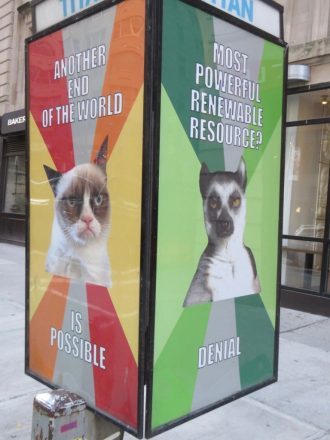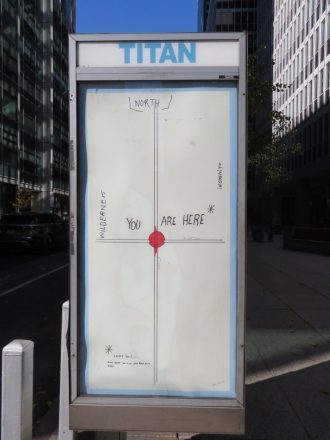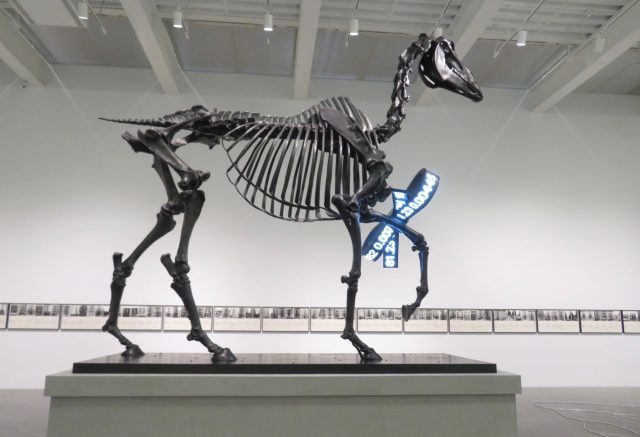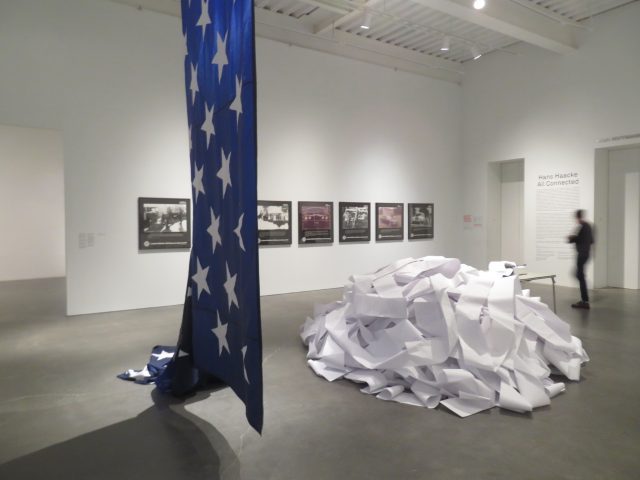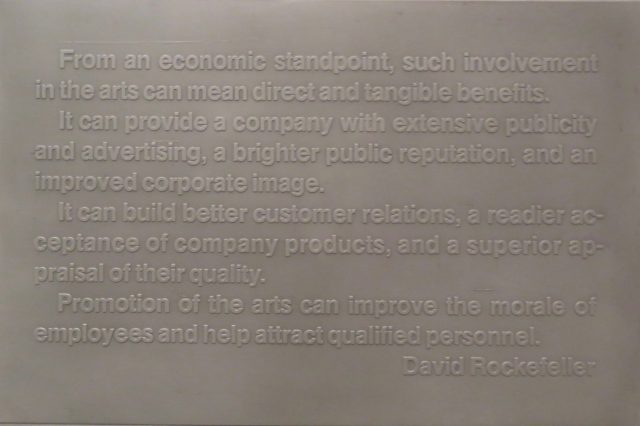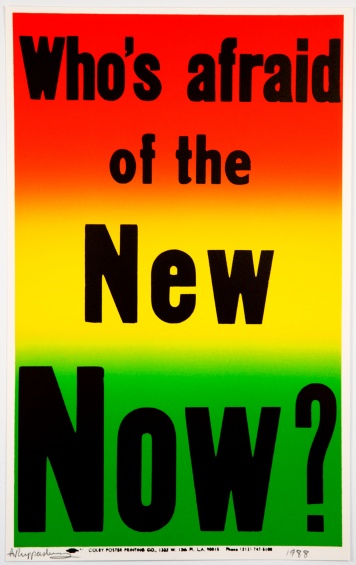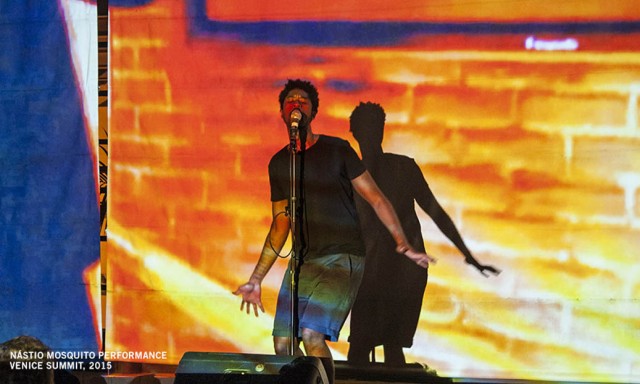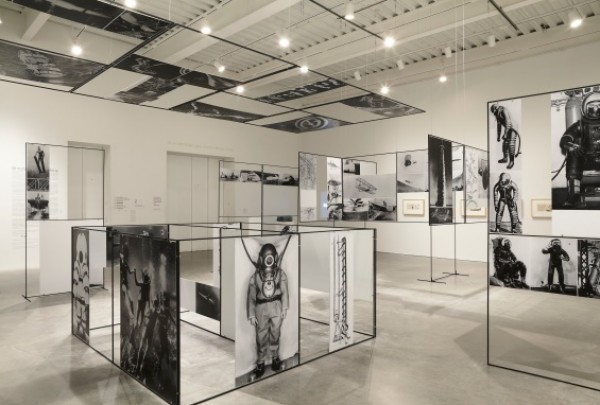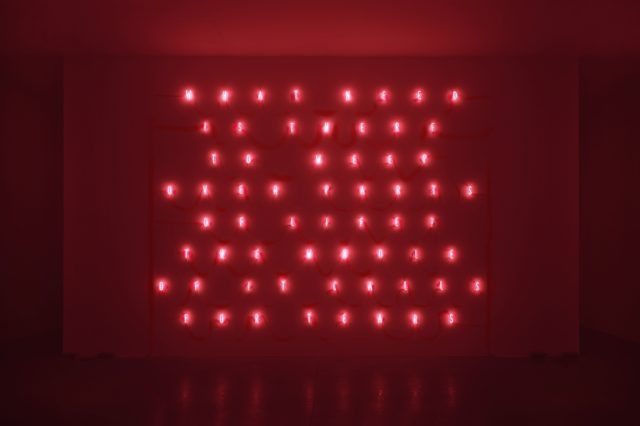
Alfredo Jaar, What Need Is There to Weep Over Parts of Life? The Whole of It Calls for Tears, neon, 2018 (photo courtesy Galerie Lelong)
Who: Alfredo Jaar, Carlos Basualdo
What: Exhibition walkthrough of “The Temptation to Exist”
Where: Galerie Lelong & Co., 528 West Twenty-Sixth St. between Tenth & Eleventh Aves.
When: Saturday, May 14, free with advance RSVP, 4:00
Why: Alfredo Jaar is one of the most provocative and innovative artists working today. Born in Santiago, Chile, in 1956 and based in New York City since 1982, the artist, architect, and filmmaker uses multimedia works to immerse viewers in the images and sounds of sociopolitical strife across the globe, exposing the lies associated with war, government control, rampant capitalism, and other issues. At the Whitney Biennial, people wait on line to experience his 06.01.2020 18.39, a video installation comprising footage from a Black Lives Matter protest in Washington, DC, on June 1, 2020, incorporating a bonus element that makes visitors feel like the helicopters are coming for them. His 2011 installation Three Women made a trio of female activists the focus of the media; it has since been expanded to thirty-three women. Neon projects declare, “I Can’t Go On / I’ll Go On,” “Be Afraid of the Enormity of Possibility,” and “This Is Not America.” Other potent projects include The Skoghall Konsthall, Culture = Capital, Shadows, and Lament of the Images.
His 2018 installation, What Need Is There to Weep Over Parts of Life? The Whole of It Calls for Tears, a quote from the Roman stoic philosopher Seneca, makes its New York debut on May 13 at Galerie Lelong as part of the exhibition “The Temptation to Exist.” The name of the show is inspired by Emil Cioran’s 1956 book of the same name; the Romanian philosopher wrote, “The universe is one big failure, and not even poetry can succeed in correcting it.” Dedicated to Italian photojournalist Letizia Battaglia, who passed away in April at the age of eighty-seven, “The Temptation to Exist” features lightboxes, ink prints, and such neon phrases as “Gesamtkunstwerk” and “Other People Think.”
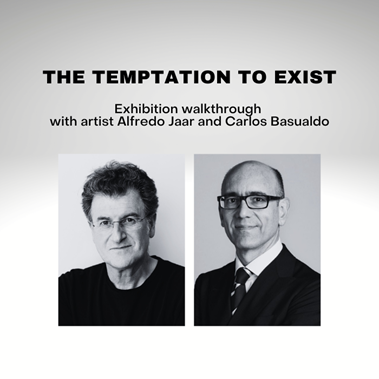
For the exhibit, Jaar has also curated works from more than sixty-five artists seeking change in the world, creating what he calls “a space of resistance, a space of hope.” Among those included are Dawoud Bey, Luis Camnitzer, Lygia Clark, Valie Export, LaToya Ruby Frazier, Félix González-Torres, Hans Haacke, David Hammons, Lyle Ashton Harris, Mona Hatoum, Jenny Holzer, Emily Jacir, Joan Jonas, On Kawara, Glenn Ligon, Piero Manzoni, Gordon Matta-Clark, Ana Mendieta, Shirin Neshat, Yoko Ono, Adam Pendleton, Michelangelo Pistoletto, Gerhard Richter, Carolee Schneemann, Nancy Spero, Hank Willis Thomas, Kara Walker, Carrie Mae Weems, Lawrence Weiner, and Francesca Woodman.
There will be an opening reception on May 13 at 6:00; on May 14 at 4:00, Jaar will hold a public walkthrough of the exhibition, joined by Philadelphia Museum of Art senior curator Carlos Basualdo. Admission is free with advance registration. Don’t miss this rare chance to witness art history in the making.
